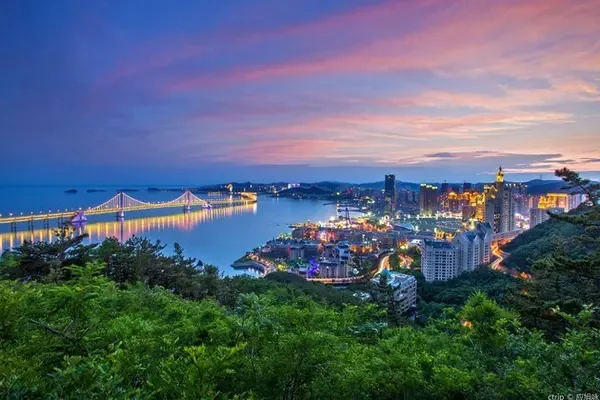Because I often go out to play, self-driving, hiking, and climbing snow-capped mountains are all my favorites, and then friends often ask me what equipment I need to go hiking? Hiking needs to deal with survival in the wild. It is full of excitement and challenges. If we are not prepared enough, it will bring us great inconvenience. So, today, I will summarize for you what equipment you need to prepare for hiking, for your reference.
The equipment that needs to be prepared is as follows:
1. Shoes: It is recommended to choose high-top thick-soled waterproof hiking shoes. This kind of shoes has thick and elastic soles and good cushioning performance, which can reduce the probability of accidental slips on the way up and down the mountain. Standing water, creeks, and rainy days are often encountered during hiking, which can effectively block water vapor from entering the shoes.
2. Warm clothes: such as down jackets, assault jackets, assault pants, fleece jackets, fleece pants, etc. Because hiking in the wild, the climate is unpredictable and the temperature difference is large, especially when crossing snow-capped mountains, keep warm to prevent colds .
3. Rain gear: A coat or raincoat with good rainproof performance can keep you rain or shine.
4. Crutches (trekking poles), headlamps, knee pads, gloves: crutches can help people maintain balance, reduce the weight on the feet, and prevent slipping when the road is slippery; bumps are inevitable when climbing, and knee pads can protect the knees ; The effect of headlights is even greater, freeing hands and lighting the dark; gloves are used to prevent stabbing, scratching, and fatigue from holding trekking poles for a long time.
5. Leggings: When hiking, leggings are very necessary. Leggings can prevent the blood from accumulating to the legs under the action of centrifugal force for a long time and cause pain; it can also prevent the invasion of poisonous insects;
6. Sunglasses, hats with brims, and sunscreen: The ultraviolet rays in high-altitude areas are relatively strong, so prepare sunglasses, hats, and sunscreen to prevent sunburn from ultraviolet rays.
7. Food and drinking water: Hiking consumes a lot of energy. It is recommended to bring some high-calorie food, such as chocolate, dried fruit, oral glucose solution, etc., so as to replenish energy at any time. For water, try to bring a water bottle of more than 1L. You will sweat a lot during the hike. Bringing water can replenish water in time to ensure that the body will not lack water and can complete the hike smoothly.
8. Medication: Due to the road risk, it is easy to fall and bruise. It is recommended to prepare band-aids and bruises. What's more, it is a virgin forest after all, and there are many insects and mosquitoes, so you can bring mosquito repellent spray.
9. Personal items: toothbrush, toothpaste, soap, portable shampoo, washing powder, toilet paper, change of clothes, socks, etc.
10. Backpack: Hiking has relatively high requirements for backpacks, which need to carry the items listed above. For a short-distance trip within 1 day, it is recommended to choose a 13-18L commuter bag; for a trip of about 3 days, it is recommended to choose a 35L professional outdoor bag; for more than 3 days of hiking, women choose a 55L mountaineering bag, and men choose a 65L mountaineering bag Bags, bags must have a back adjustment function + waterproof and scratch-resistant functions.
The above are some basic equipment for hiking. Next, let’s talk about the equipment requirements under special circumstances.
1. Like walking in Medog, because there are leeches on some sections of the road, it is recommended to prepare some salt, lighter and alcohol. The lighter can eliminate leeches, salt can prevent leeches, and alcohol can be used to disinfect wounds.
2. Regarding tents and sleeping bags, many people will ask if they need to bring them? Under normal circumstances, like a group report, travel agencies try to arrange accommodation as much as possible. For example, Medog trekking and Kula Gangri trekking, there are many accommodation points along the way, and there is no need to prepare tents and sleeping bags. Go hiking in Gamagou, there is a case of wild accommodation, but the tent travel agency provides tents, you only need to prepare sleeping bags, the temperature is very low in the wild at night, so it is recommended to prepare sleeping bags made of down material. Remarks: These situations are in the case of reporting to the group. If you travel by yourself, you still need to prepare tents and sleeping bags.
The summary of hiking equipment is here for everyone, and then a brief itinerary of these three hiking routes is attached.
Medog hiking brief itinerary:
D1 Lhasa collection
D2 Lhasa - 153km - 5013 meters of Mira Pass - 247km - Nyingchi - 130km - Pai Town
D3 Pai Town—Big Truck—Songlinkou—Duoxiongla—Lager
D4 Lager——25km——Khan Mi
D5 Hanmi——28km——Bei Beng
D6 Beibeng——35km——Medog
D7 Medog - 147km - Bomi - 260km - Nyingchi
D8 Nyingchi——401km——Lhasa
Brief itinerary for walking in Karma Valley:
D1 Lhasa collection
D2 Lhasa - Yanghu Lake - Shigatse
D3 Shigatse - 350km - Qudang - Youpa Village
D4 Youpa Village - Xiaowucuo
D5 Xiaowucuo - Xiaowula Pass (4900 meters) - Zhuoxiamu
D6 Zhuoxiamu - Cuolang Lake - Shannon Ranch - Tangxiang Observation Deck
D7 Tangxiang Observation Deck—Badang—Ega—Baidang
D8 Baidang—Eastern Slope of Mount Everest BC—Baidang
D9 Baidang - Erga - Tangxiang Observation Deck
D10 Tangxiang Observation Deck——Cuoxue Renma
D11 Cuoxue Renma——Langmala Pass (5344 meters)——Lunzhulin Village
D12 Zhulin Village——84km——Tashizong——293km——Shigatse
D13 Shigatse - 260km - Lhasa
Kula Gang Day Hiking Brief Itinerary:
D1 Lhasa collection
D2 Lhasa - Yanghu Lake - Pumo Yongcuo - Sexiang
D3 Sexiang - Baima Lincuo - Around the Lake - Cuoyu Village
D4 Cuoyu Village - Laka Day - 3 Shenhu Lake (Zhegongcuo) - Cuoyu Village
D5 Cuoyu—Jiejiucuo—Guankula Gangri-Sexiang
D6 Color Township - Pumo Yongcuo - Langkazi
D7 Langkazi - Yanghu Lake to Lake - Lhasa

